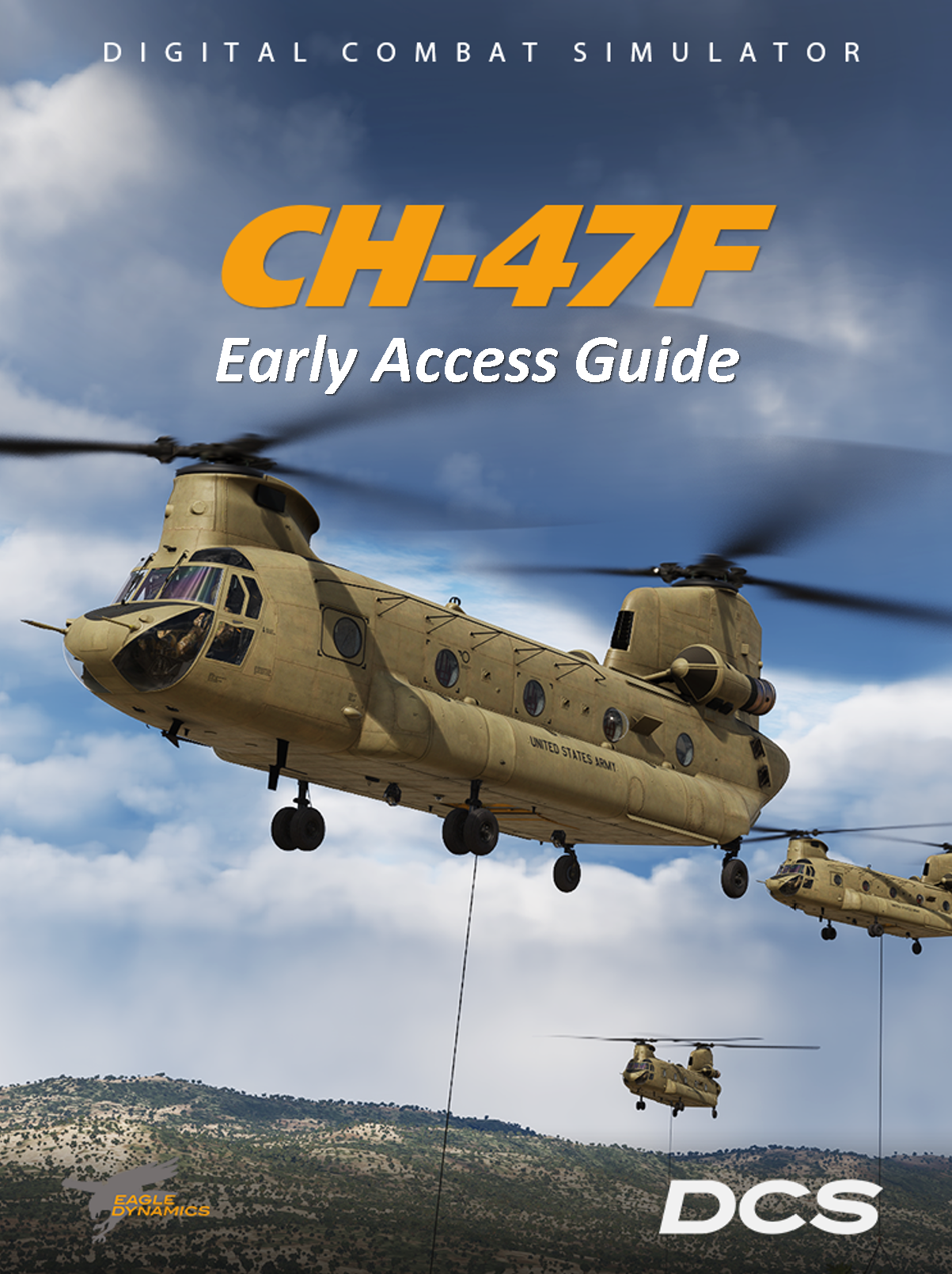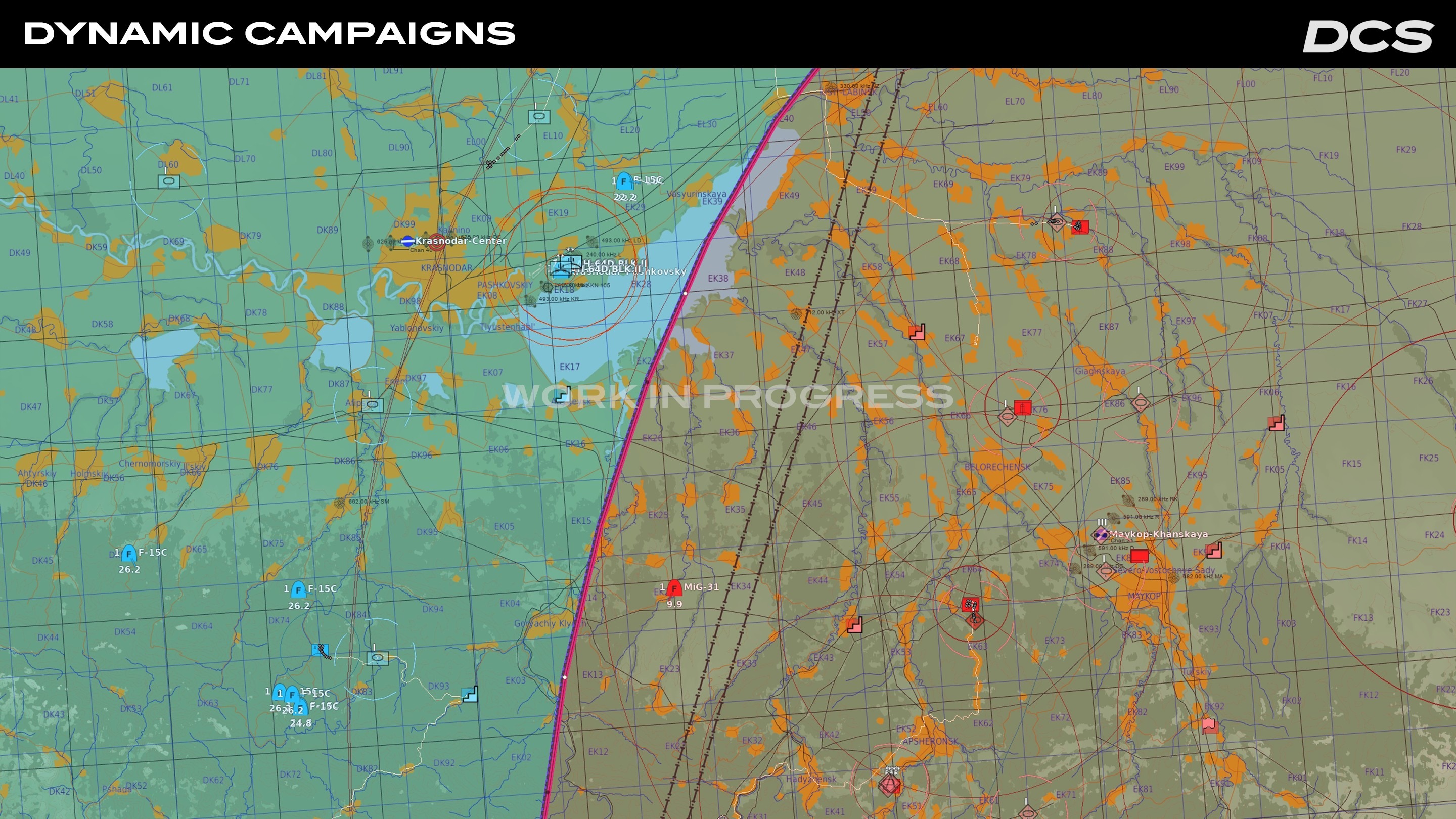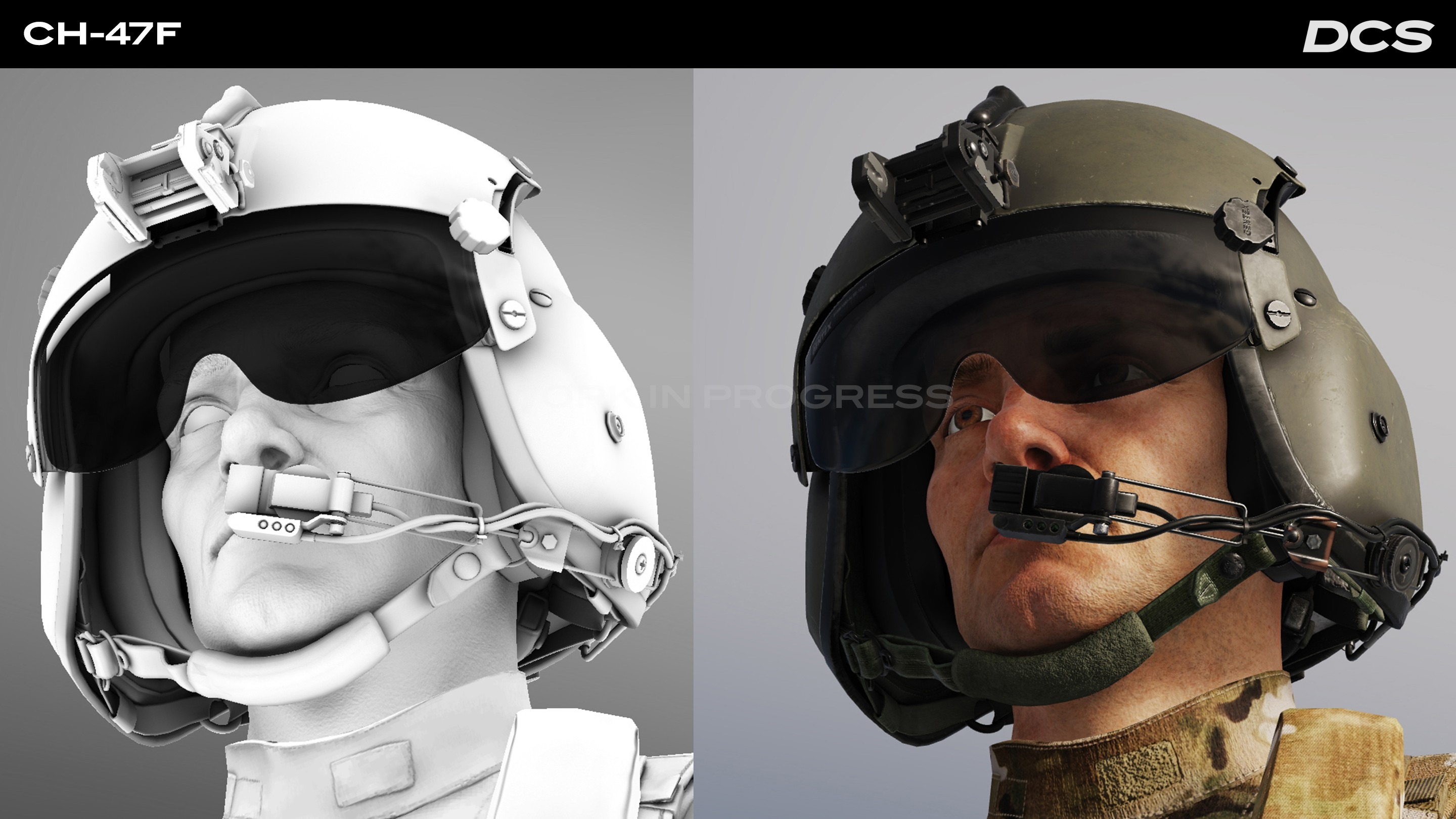DCS WORLD: Moduli Eagle Dynamics
Re: DCS WORLD: Moduli Eagle Dynamics
Graphics - ED Team ha scritto:
DCS 2.9.6 Update and CH-47F Status
The DCS: CH-47F is almost ready for early access release. We have been using the additional time to fix issues and provide additional functionality, create more content, and test. With the “Hook” nearing early access release, we are in the process of creating instructional videos, the first of which is an introduction and a simple start procedure CH-47F Introduction and Cold Start tutorial.
The comprehensive DCS 2.9.6.57650 update introduced significant new content and changes across the platform. Based on the feedback and bug reports, we have been able to identify some key issues that we are working diligently to resolve in a hot fix and before launching the DCS: CH-47F. This includes, but is not limited to issues that some of you may have encountered with the new Launcher, multiplayer dynamic spawn, VR quad view support, controllers, and the module manager.
Weapons Development Progress
AGM-12 Bullpup
The Bullpup was one of the first mass-produced, guided air-to-surface missiles and entered service before the Vietnam war. It was a Manual Command Line of Sight, or MCLOS missile, which meant that the guidance was provided by the pilot through manual steering inputs.
DCS currently features three variants of the Bullpup, the AGM-12A, the original 1958 variant for the Navy with a 250 lbs warhead and an Aerojet Mk 8 solid motor (initially designated ASM-N-7), AGM-12B, the 1960 improvement with a Thiokol LR58 liquid rocket motor (USN ASM-N-7a and USAF GAM-83A designations), and a 1964 derivative with a much larger warhead and an LR62 liquid rocket motor: the AGM-12C. 3D models were provided by Heatblur Simulations.
All variants of the AGM-12 featured a canard, cruciform aerodynamic configuration and a bang-bang steering system stabilised through a 500°/s roll rate. In addition to the engine nozzle, the rear of the missile included a pair of tracking flares that burned with an increasing intensity over time. To improve the controllability of the missile, the bang-bang canard steering was modulated. Effectively the canards deflected in short pulses, whose length and frequency depended on both the angle of deflection and the rate and duration the stick was moved. A basic form of auto-trim was also used.
One major limitation of the system was a tendency for the control axis to roll left because the roll rate increased during the deceleration to the transonic region. This was caused by delays in the control system. This was compensated for by adding a fixed offset to the roll gyro reading that did not depend on the actual roll rate. All these effects on the control system are fully modelled in DCS.
Rockwell Homing Bomb System
After the AGM-62 Walleye was introduced by the US Navy in 1967, the USAF awarded a contract for their own TV-guided bomb system to Rockwell. This resulted in a series of conversion kits for dumb bombs, dubbed HOBOS, or the Homing Bomb System. These kits consisted of an electro-optical nose seeker section, an aft control section, and a set of strakes running along the body of the bomb. The seeker and guidance used were similar to those on the AGM-62 and AGM-65, and it required the pilot and WSO to align the aircraft with the target using the seeker video feed and lock onto target contrast before release, proving to be difficult in practice.
Different daytime electro-optical and infrared seeker kits were developed for different types of bombs, of which only the KMU-353A/B kit for the Mk-84 low drag bomb saw extensive combat use. This configuration, designated GBU-8/B by the USAF, was used from 1969 onward, and is featured in DCS. The 3D model is provided by Heatblur Simulations.
GBU-15(V)/B
Despite the low effectiveness of the HOBOS, Rockwell was again contracted to continue their guided-bomb development in 1974. The result was a modular system that Rockwell referred to as Modular Guided Weapon System or MGWS. This resulted in the GBU-15(V)/B family of guided-bombs, also known as the Electro-optically Guided Glide Bombs, or EOGB.
Initially, two variants were developed: The GBU-15(V)1/B with a daylight seeker and the GBU-15(V)2/B with the same IR seeker as the one used for the AGM-65D. The configuration was similar to its predecessor, the GBU-8/B, with the Mk-84 also serving as a basis of this weapon. However it had a significantly larger set of “wings”, a more sophisticated guidance system, and an ability to communicate with the supporting launch aircraft through the AN/AXQ-14 datalink.
These new features significantly expanded the envelope of the weapon at low altitudes compared to the GBU-8/B, and it allowed for employment without a line of sight to a target at the time of release. The weapon followed a 3-stage guidance logic: After a separation manoeuvre, the weapon entered midcourse mode where it would follow a lofted trajectory along the release course. After the WSO spotted and identified the target, they would point the seeker at it and switch the weapon to transition mode. It would then turn to target heading and manoeuvre to keep the seeker at a constant look-down angle, allowing the WSO to adjust the impact angle. Finally, the WSO would select terminal guidance mode in which the bomb would either be automatically guided into impact if locked on, or flown into the target manually.
The GBU-15 is in development.
Bye
Phant
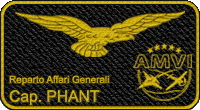

Re: DCS WORLD: Moduli Eagle Dynamics
Graphics - ED Team ha scritto:
Dynamic Campaign Development Progress
It has been quite some time since we spoke of the development progress of the Dynamic Campaigns for DCS. Indeed, our team faced some technical challenges which demanded substantial architectural changes. Below we have summarised the current positive development tasks in progress.
The DCS Dynamic Campaign (DCSDC) has been a massive undertaking, but we are making steady progress in both the strategic and tactical elements. Here is an outline of our development tasks.
- Work continues to configure ground AI forces command and control. There are three main systems: The border and frontline system, navigation based on terrain and surface-type, and a multi-level formation system. These are combined into one code for the final fine-tuning of ground combat. The decision-making system for ground force objectives is being tested and refined as a function of force size, unit locations, and the general objectives of the coalitions.
- To improve ground forces movement calculations, a mechanism was created for the DCSDC engine that optimally analyses routes between points, whilst taking into consideration roads, terrain, and potential travel speeds across different types of surfaces. A navigation mesh editor is also being developed to allow campaign creators to modify old terrains to suit their needs. We believe these components can be applied not only within Dynamic Campaigns, but also for non-dynamic DCS missions and campaigns.
- Testing of the integrated air force ‘command and control’ of DCSDC into DCS continues This includes both the creation and functioning of the missions and optimization of different mission task flight profiles. Looking ahead, there will be tests made for all components of the strategic AI troop control and player participation.
- Testing of Dynamic Campaigns has resulted in a new tracking system that allows a detailed accounting of actions and behaviours. This is critical to the debugging process of such a complex task. The current DCS track file system has also been expanded with the ability to store RTS layer information. The resulting systems will allow you to review campaign events and provide a DCSDC active save system. This active save system will allow you to resume saved games and rewind time to replay an unsuccessful episode of a campaign.
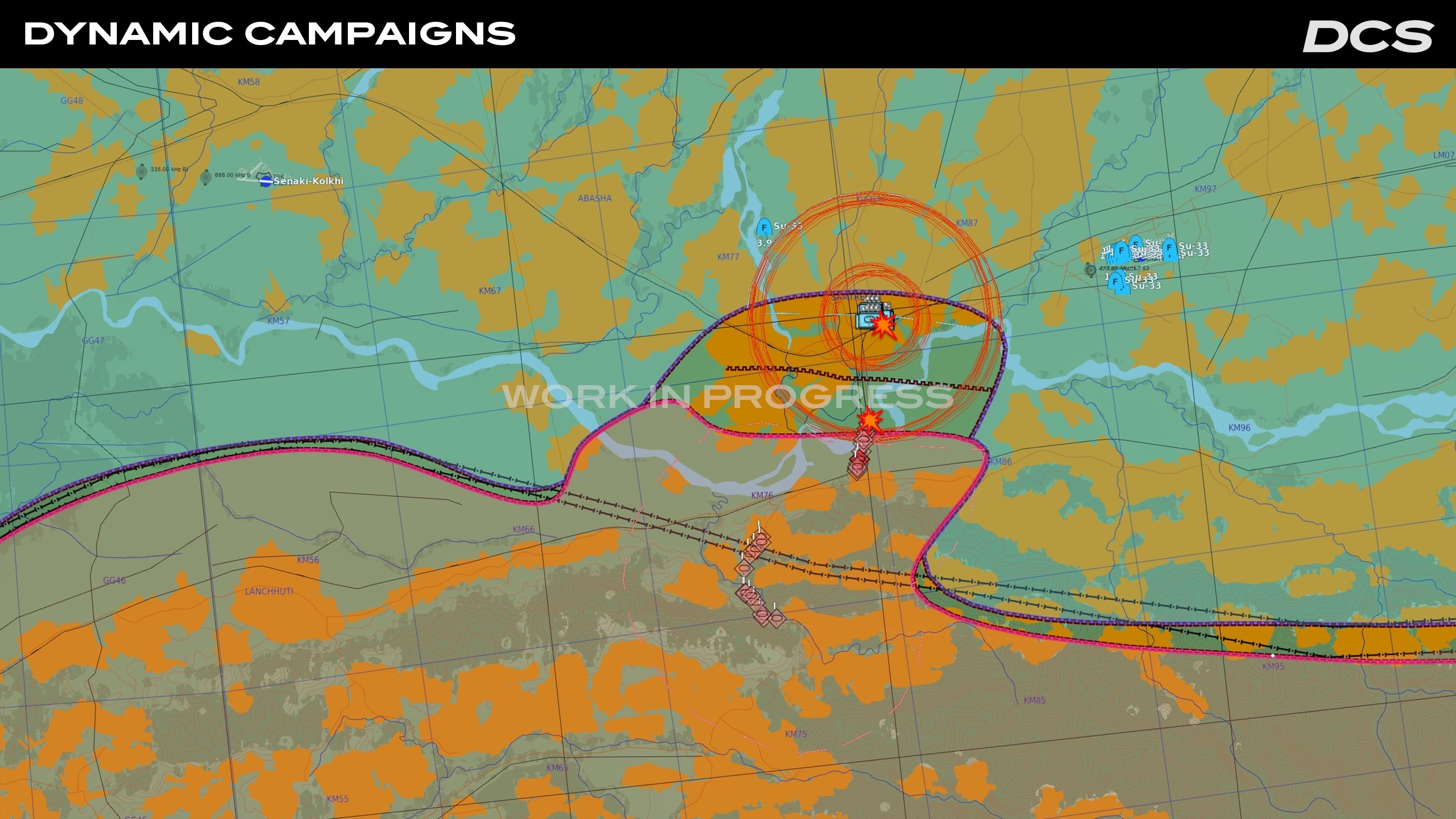
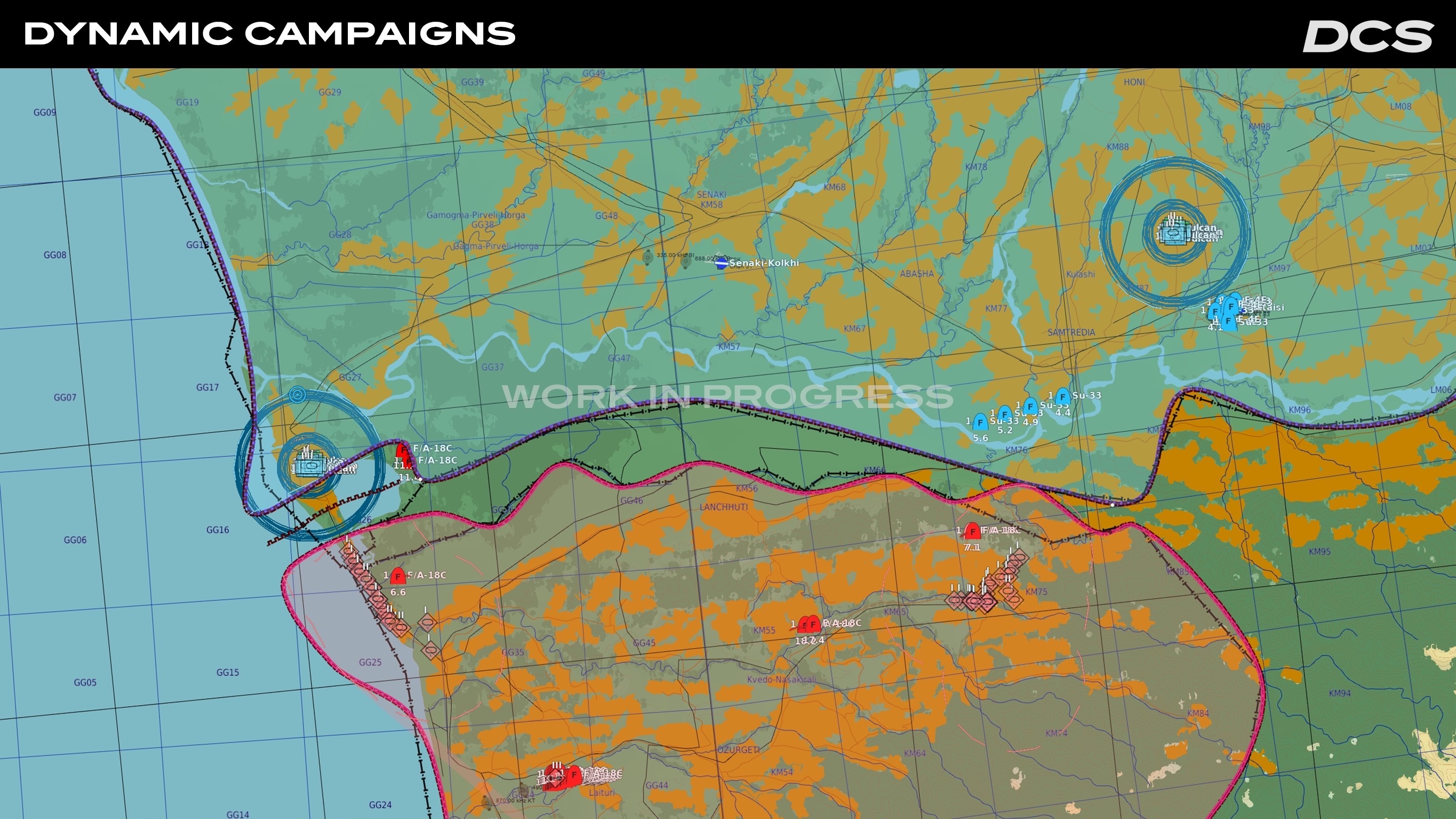
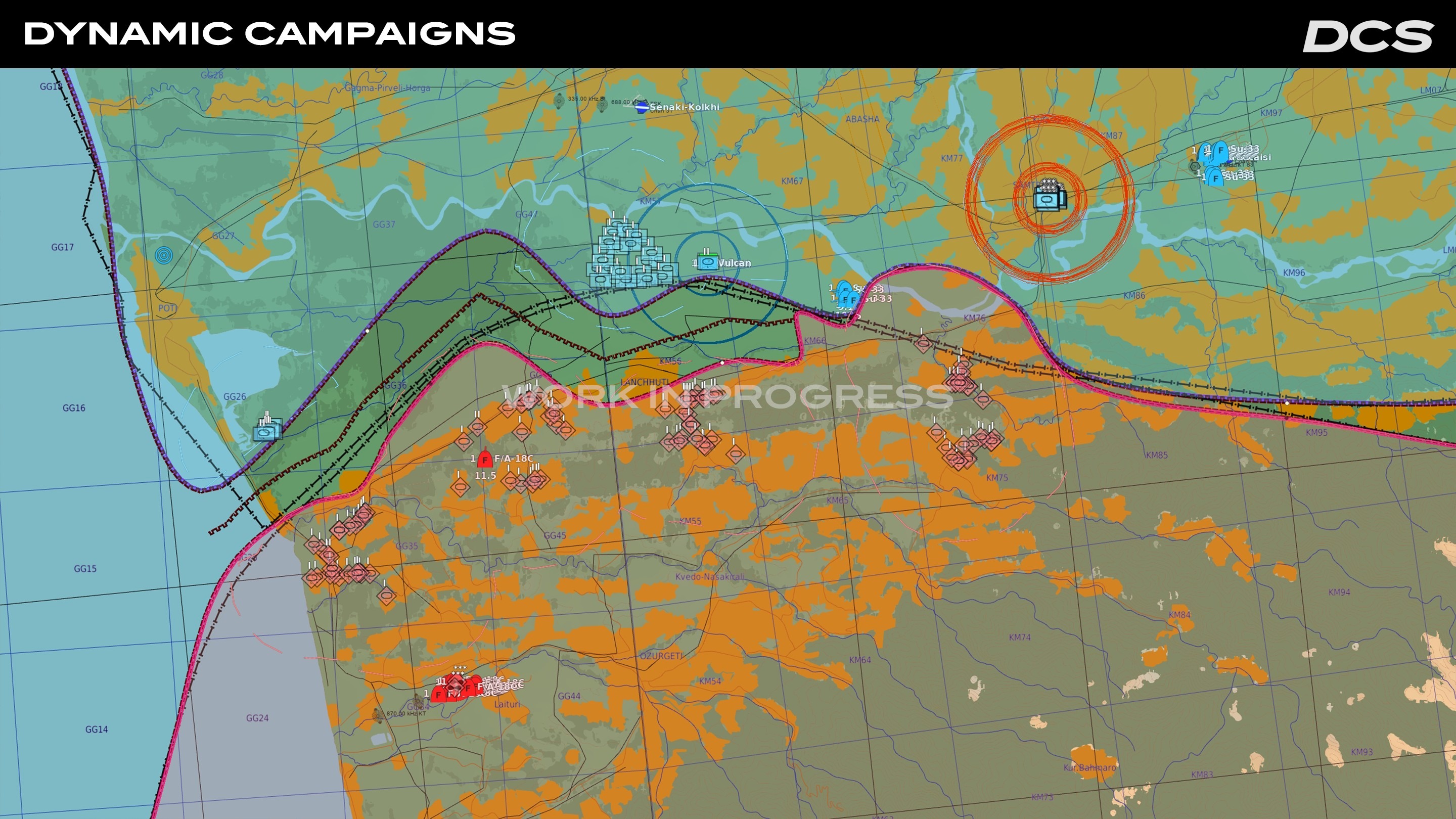
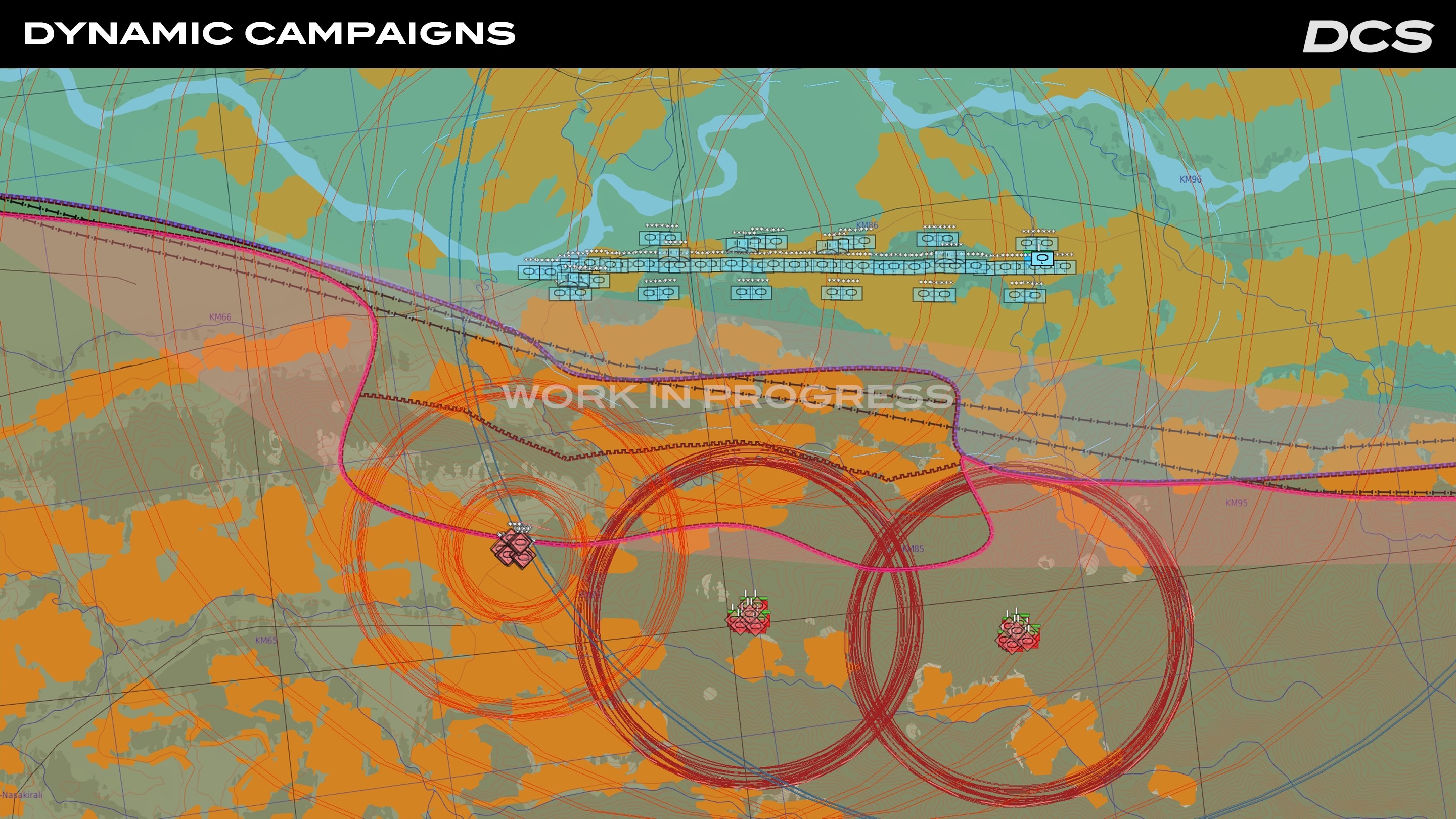
Bye
Phant


Re: DCS WORLD: Moduli Eagle Dynamics
Graphics - ED Team ha scritto:
CH-47F Development Progress
The DCS: CH-47F is nearing early access release with development focus on flight model and flight control system issues, avionics system development, missions and training, and as always testing and bug fixing. We are nearly there and once again please accept our sincere apologies for the delay. Please read the details below.
Over the last few weeks, we have made significant enhancements to the DCS: CH-47F module, focusing on visual and functional improvements as well as mission updates. Below is a concise summary of the recent progress.
- Visual and Functional Enhancements
- Overhead panels visual improvements and fixes
- Improved rotor blade rendering and improvements to their damage model.
- The internal views have been improved by hiding unnecessary panels, adding gunner radio panels, improved radio control heads, and enhanced animations for buttons, levers, and switches.
- Lighting and Animation: Improved cockpit lighting, added 4th Level of Detail ( LOD), adjusted heater start button connector, and changed mainboard lighting from white to green. Enhanced back-lit text, throttle handle connectors, FLIR maps, Power Distribution Panel (PDP) lamps animation, Multi-Function Display (MFD) rockers animation, and transparency of the stick position indicator glass.
- Night Vision Goggles have been added.
- The Countermeasures and Warning System (CMWS) has been moved from post Early Access release to Early Access release.
- The load and unload cargo system has also seen further refinements and additional functionality.
- Mission Updates
- Added numerous instant action missions across multiple maps.
- Additional training missions that cover primary mission procedures.
- Flight Model and Flight Control System
- Refined Automatic Flight Control System scheduling for authentic take off behaviour.
- Adjusted flight modelling in conjunction with flight control system for correct forward flight behaviour without Longitudinal Cyclic Trim (LCT) scheduling. Note: at early access release, manual pedal input will be required for coordinated turns. Further refinements to the LCT and Digital
- Advanced Flight Control System (DAFCS) will come during the early access period.
- Multicrew
- Pilot and Copilot Multi Crew have been further refined, particularly with synchronisation of controls and displays.
Route Tool New feature
We are excited to present a new F10 map route tool. This tool will allow you to edit, create, and delete waypoints/steerpoints prior to spawning in your aircraft in both single player and multiplayer. Please stay tuned for the next update to try this yourself.
The new Route Tool will allow you to create your own flight routes for multiplayer. It allows you to edit and to create preset waypoints/steerpoints routes before spawning into the mission. This includes being able to set elevations, MSL or AGL election, and dynamic ETAs.
You will also be able to save route presets for each terrain. Once a route has been created, you can select it from the PRESET list prior to spawning. This is a general multiplayer route tool for all DCS aircraft, and it’s especially useful for the Flaming Cliffs 2024 aircraft. This tool is not related to upcoming Data Transfer Cartridge (DTC) functionality, which we will update you on at a later date. Stay tuned!
Bye
Phant


Re: DCS WORLD: Moduli Eagle Dynamics
Graphics - ED Team ha scritto:
CH-47F Out Now
We are thrilled to finally bring you the all new twin rotor DCS: CH-47F in early access. Download now and enjoy this amazing aircraft. During Early Access, you can benefit from a 20% discount. Watch the launch trailer now!
The all new CH-47F is an icon of modern air mobility. Known for its heavy lifting capabilities, the “Hook” has been vital in operations across the globe since the 1960s, from the jungles of Southeast Asia, to the deserts of the Middle East.
The CH-47 has been a cornerstone of U.S. and allied military aviation logistics since its introduction. Its ability to handle multiple mission profiles with speed and agility has made it a valuable asset in modern warfare. The CH-47F’s design reflects a perfect blend of technological advancements and practical battlefield experience, proving its worth time and time again under the most demanding conditions.
Airframe and Design
The CH-47F features a fully integrated digital cockpit management system, which is a significant upgrade over its predecessors. This modern cockpit enhances operational efficiency by allowing pilots to manage onboard systems more effectively. It is equipped with the Common Avionics Architecture System (CAAS), which improves navigation and battlefield survivability too. The damage resistant structure itself is designed to withstand small arms fire and shell fragments.
Performance
Powered by two Honeywell T55-GA-714A engines, the CH-47F can reach speeds of over 175 miles per hour (282 km/h), which makes it one of the fastest helicopters in the U.S. Army. The maximum payload capacity is around 21,000 pounds with an external load, meaning it can carry artillery and vehicles, underslung. The range and fuel efficiency allow the CH-47F to fly missions over 400 nautical miles (460 mi, 741 km) and operate with a fuel efficient cruise speed.
Missions Versatility
The CH-47F is capable of multitasking roles including troop movement, artillery emplacement and battlefield resupply. The triple hook cargo system can also be used for evacuation missions. It also has an impressive set of advanced countermeasures and armour protection for operating in high threat environments.
Early Access features
- 3D models
- Highly detailed external and internal modelling, including cockpit and cargo hold.
- Fully interactive, VR-ready cockpit.
- Highly detailed pilots and animations (3rd person view).
- U.S. Army Paint Schemes.
- Avionics and other features
- Unmatched helicopter flight dynamics that only DCS can provide.
- Basic trim system and AI helper.
- High-level Multi-Function Displays (MFD)
- VSD page
- HSD full/half pages with digital map support
- Engine and Power Train full/half pages
- Fuel full/half pages
- Flight plan summary page
- WCA
- Radar Warning Receiver (RWR) and pilot-controlled Countermeasures Dispenser System with chaff and flares.
- Common Missile Warning System (CMWS)
- Integrated ARC-186 radio with Voice Chat.
- Base Night Vision Goggles.
- Multi-crew
- AI-side gunners equipped with M60D machine guns.
- Base multi-crew for online games including pilot, co-pilot and two side gunners stations
- Cargo
- Ability to load and unload cargo from the internal bay based on weight and volume.
- Single-point sling loading.
- Supporting the new DCS warehouse to warehouse cargo transfering feature
- Early Access Manual.
- Quick action missions
- Training missions
Features to do during Early Access
- 3D models
- Pilot and co-pilot models for first person view
- More Paint Schemes.
- Avionics and other features
- DAFCS trim system and force trim.
- Autopilot Hold Modes.
- Completed MFD pages.
- Full support of the Night Vision Goggles.
- Heads Up Display System.
- Engine fire extinguishers and EAPS system.
- Multi-crew
- A second crew member can be another player or the AI.
- Flight engineer functionality on different stations.
- Gunner on the ramp.
- Different machine gun models for side and ramp gunners.
- Cargo
- Multi-point sling loading.
- Extended range fuel system (ERFS II).
- Full manual.
- Extra training Missions.
- Additional Missions.
During the past few weeks, we have spent our time improving visuals and functionality for early access launch. We have also been able to provide training and instant actions aimed to help get you in the air in record time!
Bye
Phant


Re: DCS WORLD: Moduli Eagle Dynamics
Graphics - ED Team ha scritto:
Dynamic Cargo New Functionality
The launch of the DCS: CH-47F introduced our new cargo and logistics functionality. This Dynamic Cargo feature is still work in progress and is therefore not enabled by default but can be activated on the ‘full info page’ in the warehouse interface. If you are having issues with the system please check out the Cargo System Guide.
We are working towards enabling the feature for other transport capable helicopters, including DCS: UH-1H Huey, DCS: Mi-8MTV2 Magnificent Eight and DCS: Mi-24P Hind. We are in the process of creating many additional cargo loads, so don’t hesitate to inform us if you have good ideas to enhance the logistics game play!
Troop movements and animations in and around your helicopter are some of the biggest requests we have received. This is in progress but does require some major re-work to infantry models and animations.
‘Fat Cow’ and dynamic FARP operations will certainly make the DCS: CH-47F a more capable asset on the battlefield. We are currently working to ensure this feature is available soon and will update you as things progress.
Finally, dynamic cargo mass accounting, weight/balance and operational restrictions are being worked on too.
Bye
Phant


Re: DCS WORLD: Moduli Eagle Dynamics
Graphics - ED Team ha scritto:
Multithreading Integration process
In the next update, we will be dropping the single threaded version of DCS to focus on the multi threaded version alone. We have made significant enhancements that offer improved performance and stability and can’t wait to share them with you.
Significant multithreading progress has been made since its release, improving performance and stability substantially. This is particularly true for multiplayer servers with numerous forces. Multithreading has enabled the use of modern multi-core processors by distributing workloads more efficiently across CPU cores. We will continue to improve our multithreading for DCS and focus on performance through the platform.
With multithreading at an advanced and stable state, we will be terminating the older single-threaded version of DCS in the next update.
CH-47F Pilots Development Progress
The DCS: CH-47F module will soon be receiving first person view pilot models. These models are being crafted to ensure every aspect of the pilot's appearance reflects real-world standards. The flight suits, helmets, and accessories such as body armour and communication gear have all been modelled. This will be a particularly important improvement for those of you flying in virtual reality.
These new models will be fully integrated into the cockpit and animated to correspond with crew actions, control operation, interaction with instruments and more!
In parallel, we are adding new elements and functionality to LCT (Longitudinal Cyclic Trim), AFCS (Automated/Advanced Flight Control System), DAFCS (Digital Advanced Flight Control System), DASH (Digital Air Speed Hold), DCP (Differential Collective Pitch), as well as new display pages and associated functions, new aircraft skins, more advanced sling functions, improvements to the cargo system, new crew-served weapons, and more.


Bye
Phant




